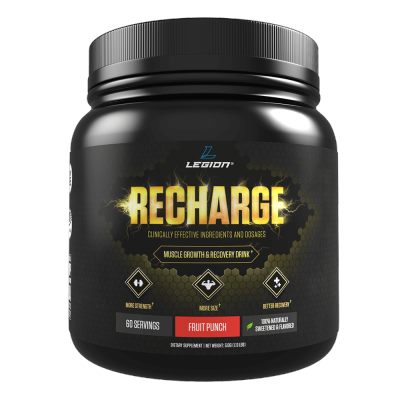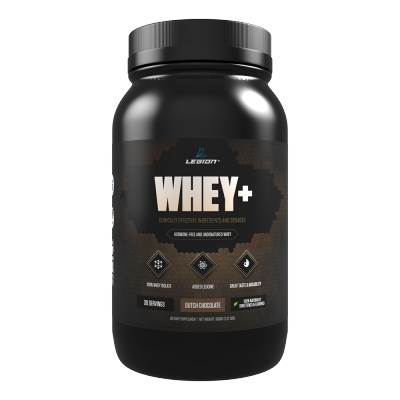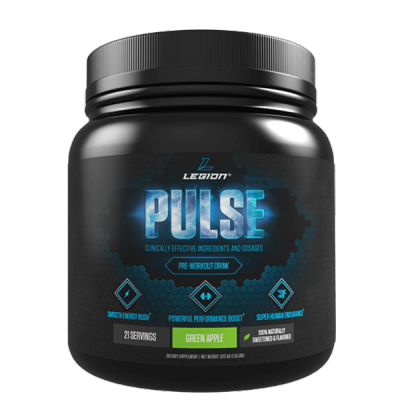If you’re like most women, you want a very specific type of body.
You want to look toned but not “bulky.”
You want to be lean but not scrawny.
You want the right lines and curves in all of the right places, like your legs, abs, and butt.
Well, you can have all of these things–the whole package–no matter your current condition, genetics, or exercise history. You don’t have to live in the gym or eat like a bird, either.
It’s pretty simple, really. All you have to do is…
- Add enough muscle to the right parts of your body.
- Reduce your body fat percentage to ~20%.
That’s it.
Do that, and you’ll have the body of your dreams. I guarantee it. And in this article, we’re going to focus on number one: gaining muscle.
Specifically, we’re going to explore the subject of female muscle growth and dispel myths (like the idea that women simply can’t gain muscle effectively, or shouldn’t), establish scientific facts about building a female physique, and lay out simple, practical guidelines that you can implement immediately.
So, if you want to know how fast women can gain muscle and how to put it in the “right” spots to get the look that you want, then you want to keep reading.
Table of Contents
+
Want to listen to more stuff like this? Check out my podcast!
Female Muscle Growth Myth #1:
Women Can’t Build Muscle as Effectively as Men
You may have heard that women simply don’t have the physiology to gain muscle effectively, and that they should stick to Zumba and yoga instead.
This seems reasonable at first glance because it’s well known (and immediately obvious) that women produce a lot less testosterone than men–about 15-20 times less, to be exact.
Most people know that testosterone is the primary hormonal driver of muscle growth, so it’s fair to assume that a body with very little testosterone flowing through its veins won’t be able to build much muscle.
Well, what they don’t know is that testosterone isn’t the only hormone involved in muscle gain.
Another major player is estrogen, which women produce much higher levels of than men, and which confers a variety of muscle-building benefits, including:
- Stimulating growth hormone production, significantly aids in post-workout recovery
- Preventing muscle breakdown
- Increases metabolism
Women also produce more growth hormone throughout the day, which further helps them gain muscle faster.
So, while women’s low testosterone levels puts them at a hormonal disadvantage for improving their body composition, they more or less make up for it with the above.
This is why research shows that women can gain muscle more or less as effectively as men, and why many elite female athletes have about 85% as much muscle as male counterparts of equal heights.
That begs a question, though:
Why do you rarely see women in gyms that are anywhere near as big as the guys?
The answer is simple:
Women start out with about half as much total muscle as men and can’t gain as much whole-body muscle as men can, thanks mainly to the differences in hormones and anatomy.
Female Muscle Growth Myth #2:
Lifting Weights Makes Women “Bulky”
If you’re like most women, this is the one that has made you leery of weightlifting.
You’ve probably found plenty of supporting evidence, too, like elite Crossfit athletes.
Case in point:
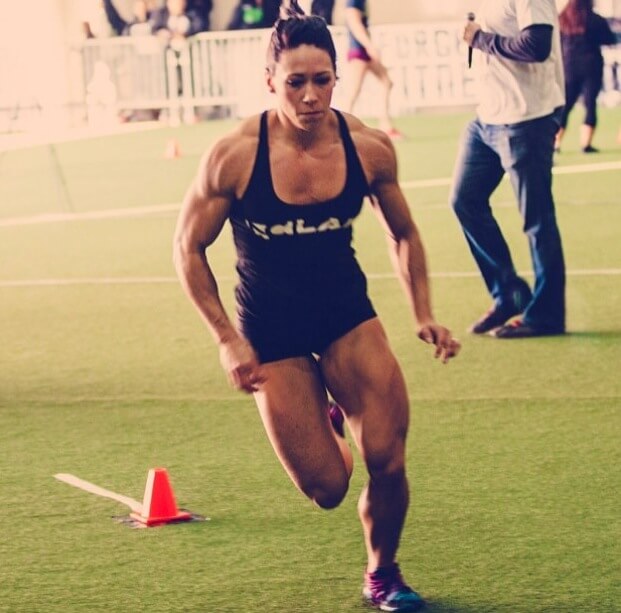
That image alone is enough to make most women swear on their children to never, ever do a heavy squat, deadlift, or overhead press for as long as they live.
Well, it’s exponentially harder to look like that than most women know. That takes elite muscle-building genetics and years of concerted effort in the gym and kitchen, and in most cases, steroids as well.
That said, there are still many women in gyms everywhere that hit the weights regularly and look “bulky” enough to give you pause.
And that’s why you need to know what really gives women that look:
Being too fat.
Harsh, I know, but let me explain.
First, would you consider this woman “bulky”?

Probably not, right?
Well, you might be surprised at how much different her body would look if she gained 15 pounds of fat, because she has a lot more muscle than the average woman (~15 pounds above average, I’d guess).
Her legs would lose their sleek lines, her core definition would disappear, and her arms would fill out like sausages.
You see, when you gain fat, the majority accumulates inside and on top of your muscles, so the more you have of both, the larger and more formless your body tends to look.
Thus, a rule of thumb for women that want to be lean, toned, and defined:
The more muscle you have, the leaner you have to be to avoid looking “bulky.”
(Replace the word “bulky” for “fat,” and the same thing holds true for guys.)
For example, a woman with little muscle might feel rawboned at 18% body fat and comfortable at 25%, whereas a woman with a significant amount of muscle will probably love how she looks at 18% but feel downright uncomfortable at 25%.
This is why most women I’ve worked with are happiest when they’ve gained 10 to 15 pounds of muscle and dropped their body fat percentage to about 18%.
Female Muscle Growth Myth #3:
Women Need to “Tone” Instead of Build Muscle
Read just about any fitness magazine for women, and you’re going to find a lot of great advice about how to get “toned.”
You know, starve yourself, do a bunch of cardio, and lift really light weights.
Well, if you want to be tired and hungry all the time, to hate your workouts, and to spend half your days salivating over the thought of eating carbs, only to wind up skinny fat, go right ahead.
If, however, you want to go in another direction with your physique, then you have to go in another direction with your diet and exercise.
And just to put a visual to it, check out these pictures:
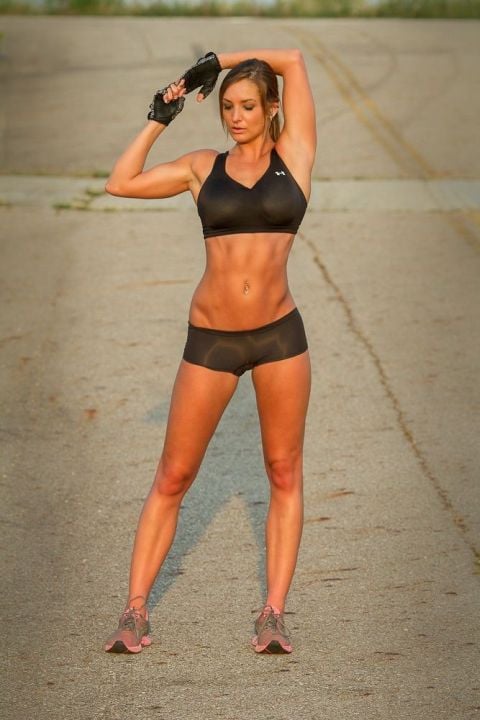
Whose body would you rather have?
Most women would choose the second…and would be surprised to learn that both of these women have about the same body fat percentage. The latter just has a lot more well-placed muscle.
As I mentioned earlier, muscle is what gives you curves, shape, and “tone” when you’re lean. Without adequate muscle, the best you can hope for is “thin.”
So…the question isn’t if you should gain muscle, it’s just how much.
And after working with thousands of women I’ve found that most need to gain around 10 to 20 pounds of muscle and reduce their body fat percentage to the 18 to 20% range to get the look they want.
This is where you look both feminine and fit, and it’s a look that can be maintained year-round.
So, now that we’ve dispelled some myths and located true north, the next question is… how do you actually get there?
Let’s find out.
The Best Way for Women to Build Muscle
Like most things fitness, this isn’t as complicated as it’s made to seem by many mainstream “gurus”.
There are just three steps:
- Eat the right number of calories.
- Eat the right amount of protein, carbs, and fat.
- Do effective muscle-building workouts.
Let’s take a closer look at each.
Step 1
Eat the Right Number of Calories
The single biggest mistake that keeps women from building muscle is eating too little food (calories).
If you consistently eat fewer calories than you burn, you significantly hinder your body’s ability to build muscle.
The physiology in play here is fairly complex, but the long story short is restricting your energy intake shifts your body into an “energy conservation” mode wherein certain bodily functions are given priority over others.
Building new muscle tissue isn’t vital for survival and requires quite a bit of energy, so it’s fairly low on the list.
A calorie deficit also reduces anabolic and increases catabolic hormone levels, causing a systemic shift away from muscle gain and toward muscle breakdown.
On the flip side, regularly eating at least slightly more calories than you burn produces the opposite effects, aiding in muscle growth.
It raises anabolic hormone production, enhances your body’s muscle-building machinery, and improves your performance in the gym and ability to recover from your workouts.
“But won’t overeating cause me to gain fat, too?” you might be thinking.
Yes, it will, and that’s just part of the game. It’s simply impossible to gain muscle quickly and efficiently without also gaining some fat.
In you’re like most people, you can expect to gain muscle and fat at about an equal rate (for every pound of muscle you gain, you’ll also gain a pound of fat).
Fortunately, you can carefully control your fat gain (and easily eliminate unwanted body fat when the time comes).
Here’s how to do it right:
1. Maintain a moderate calorie surplus of 5 to 10%.
This should allow you to gain 0.25 to 0.5 pounds per week.
If you’re not sure how to determine your calorie intake, click here.
2. Don’t screw it all up with massive cheat meals or days.
One of the biggest mistakes I see people make while eating to gain muscle is egregious overeating.
A couple days of gorging per week while bulking is enough to cause you to gain fat at double or even triple the normal rate.
Don’t do this. Learn how to “cheat” intelligently instead.
3. If you’re over 25% body fat, diet down to ~20% before focusing on muscle building.
This is ideal for several reasons:
- It preserves insulin sensitivity and hormonal balance.
- It allows you to maintain a calorie surplus for many months before having to reduce body fat levels.
- It saves you from long, grueling cuts.
4. Once you reach 25 to 27% body fat, stop bulking and start reducing body fat levels.
Don’t “slow cut,” either. Do everything you can to safely and healthily lose fat as quickly as possible.
5. Juggle your “gaining” and “cutting” phases until you’re happy with your physique.
If you’re like most people, you’ll eventually reach a point where you’re happy with your overall muscle tone and development.
The name of the game then becomes getting and staying lean while still training hard and progressing in your lifts and addressing weak points in your physique.
Step 2
Eat the Right Amount of Protein, Carbs, and Fat
If your only concern is body weight, then calories are king.
If you want to improve your body composition, though, then you have to pay attention to where those calories are coming from in terms of protein, carbs, and fat.
Here’s what to do:
1. Eat 1 gram of protein per pound of body weight per day.
This is enough to reap all of the benefits of a high-protein diet, including faster muscle growth.
2. Eat 0.3 grams of fat per pound of body weight per day.
This is enough dietary fat to maintain health and performance and keep your meal plans interesting.
If you want bonus points, give special emphasis to monounsaturated fats, which are rich in foods like nuts, olive and peanut oil, and avocado.
3. Get the rest of your daily calories from carbs.
Many people restrict their carbohydrate intake because they think it’ll prevent fat gain.
It won’t, but that’s another discussion. What you need to know here is this:
Research shows that a moderate/high-carb diet and can help you gain muscle and strength faster in several ways. (If you want to dive into the details, check out this article.)
Relatively unprocessed carbs like fruit, veggies, and whole grains are also great sources of various micronutrients and fiber.
All this is why I recommend a high-carb diet for maximizing muscle gain.
Now, you’re probably wondering how to figure out what your carb intake should be–how to “get the rest of your daily calories from carbs.”
Well, a gram of protein and carbohydrate both contain about 4 calories, and a gram of fat contains about 9, so to figure out your carbs, you…
- Multiply your target protein intake by 4.
- Multiply your target fat intake by 9.
- Add these together and subtract the sum from your total calories, giving you the number of calories you have remaining for carbs.
- Divide this remaining number by 4 to get the number of grams of carbs you should eat every day.
Let’s look at an example of how this plays out.
I weigh about 190 pounds and my TDEE is about 2,700 calories, which is what I intend on eating every day to maintain my weight and body composition.
I need to eat 190 grams of protein and 60 grams of fat per day, and here’s how I figure out my carbs:
- 190 x 4 = 760
- 60 x 9 = 540
- 760 + 540 = 1,300, and 2,700 – 1,300 = 1,400 calories remaining for carbs.
- 1,400 / 4 = 350 grams of carbs per day.
Thus, my macros are:
- 190 grams of protein
- 60 grams of fat
- 350 grams of carbs
(Per day.)
Alright…your turn!
Step 3
Do Effective Muscle-Building Workouts
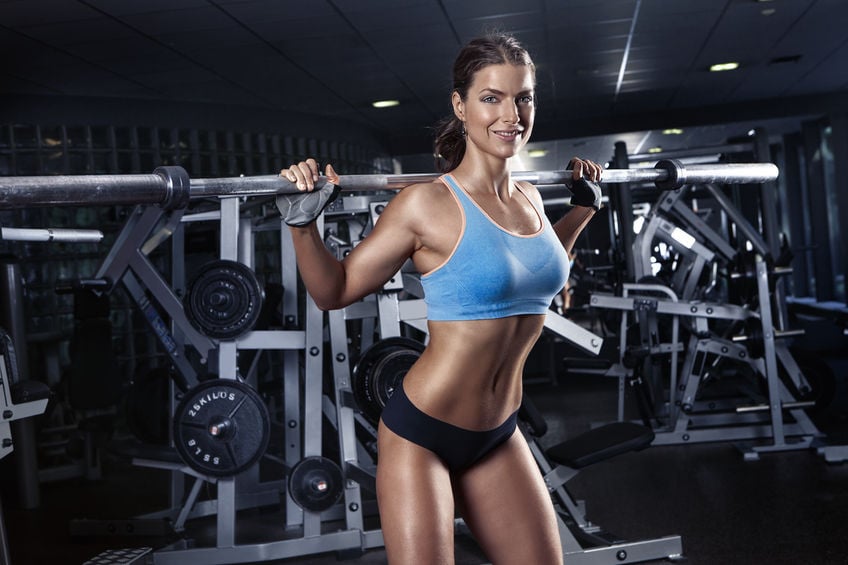
You can be the embodiment of elegance and grace outside the gym, but if you want a killer body, you need to get down and dirty in your workouts.
You want statuesque legs, a butt that “melts the Internet,” and chiseled arms and abs, you say?
Then you need to knock off the BOSU lunges, side bends, yoga poses, and Swiss ball crunches.
This wimpy training will only make you a waif.
Squats, deadlifts, hip thrusts, overhead presses…these are your new best friends.
These are what will turn you into a goddess.
And you need to show up every day with one goal in mind: to build muscle and strength.
That means you’re going to be moving heavy weights and giving each rep, set, and workout everything you’ve got.
That means you’re going to make some deformed faces when you grind out those last few reps. You may even let out a grunt or two.
Your hair is going to get messed up and you may want to invest in some good moisture-wicking clothing.
But you’re not there to look cute.
You’re there to make progress and it comes one ugly, shaky, sweaty facial contortion at a time.
Now, the best types of workout routines for women meet the following criteria:
- They focus on heavy weightlifting.
- They emphasize compound movements.
- They emphasize the lower body more than the upper body.
- They keep cardio to a minimum.
This approach won’t meet everyone’s needs, of course, but this is how the majority of women should be working out.
You can learn more about this style of training in my book Thinner Leaner Stronger, but I want to give you a simple workout that you can do for the next 8 weeks to see how my advice works for you.
What I want you to do over the next 8 weeks do the following weightlifting workouts:
DAY 1
UPPER BODY & CALVES
Incline Barbell Bench Press
3 light warm-up sets
3 sets of 4 to 6 reps (8 to 10 reps if you’re brand new to weightlifting)
Incline Dumbbell Bench Press
3 sets of 8 to 10 reps
Flat Barbell Bench Press
3 sets of 8 to 10 reps
Optional:
(Train your calves if you want more defined calves. Don’t if you don’t.)
Standing Calf Raise
3 sets of 4 to 6 reps
Seated Calf Raise
3 sets of 4 to 6 reps
DAY 2
BACK & BUTT & ABS
Barbell Deadlift
3 light warm-up sets
3 sets of 4 to 6 reps (8 to 10 reps if you’re brand new to weightlifting)
Barbell Squat
3 sets of 8 to 10 reps
Barbell Row
3 sets of 8 to 10 reps
One-Arm Dumbbell Row
3 sets of 8 to 10 reps
3 to 6 Abs Supersets
(Do the following 3 sets back-to-back to complete one superset.)
Cable Crunches
1 set of 10 to 12 reps
Captain’s Chair Leg Raise
1 set to failure
Air Bicycles
1 set to failure
If you have lower-back issues, remember that you can swap the deadlift for a more lower-back-friendly variation like the sumo or hex deadlift, or you can replace it with an exercise like the T-bar row.
If you can’t do pull-ups or chin-ups, you can use a machine that assists you. If your gym doesn’t have one, you can do dumbbell rows instead.
DAY 3
UPPER BODY & CALVES
Standing Barbell Military Press
3 light warm-up sets
3 sets of 4 to 6 reps (8 to 10 reps if you’re brand new to weightlifting)
Side Lateral Raise
3 sets of 8 to 10 reps
Bent-Over Rear Delt Raise
3 sets of 8 to 10 reps
Optional:
Standing Calf Raise
3 sets of 12 to 15 reps
Seated Calf Raise
3 sets of 12 to 15 reps
DAY 4
ARMS & ABS
Barbell Curl
3 light warm-up sets
3 sets of 8 to 10 reps
Close-Grip Bench Press
3 light warm-up sets
3 sets of 8 to 10 reps
Alternating Dumbbell Curl
3 sets of 8 to 10 reps
Seated Triceps Press
3 sets of 8 to 10 reps
3 to 6 Abs Supersets
Cable Crunches
1 set of 10 to 12 reps
Captain’s Chair Leg Raise
1 set to failure
Air Bicycles
1 set to failure
DAY 5
LOWER BODY
Barbell Squat
3 light warm-up sets
3 sets of 4 to 6 reps (8 to 10 reps if you’re brand new to weightlifting)
Leg Press
3 sets of 8 to 10 reps
Romanian Deadlift
3 sets of 8 to 10 reps
Hip Thrust
3 sets of 8 to 10 reps
That’s it–just 9 to 12 heavy sets for each workout with some optional additional sets if you feel you still have energy in the tank.
A couple odds and ends:
- Rest 2 to 3 minutes in between each heavy set and 1 minute in between the bodyweight sets.
This will give your muscles enough time to fully recoup their strength so you can give maximum effort each set.
- Once you hit the top of your rep range for one set, you move up in weight.
For instance, if you get 10 reps on your first set of squats, you add 5 pounds to each side of the bar for your next set and work with that weight until you can squat it for 10 reps, and so forth.
- If you’re looking to lose fat, do several sessions of high-intensity interval training as well.
You can learn more about this here.
I guarantee that if you do this workout and eat right for the next 8 weeks, you’ll be very happy with how your body responds.
What About Cardio?

For decades we’ve been taught that we should all be running, stepping, and jazzercising our way to fitness.
This, combined with a low fat diet, was the mission statement of the nineties. Any foods that were full fat were sinful and anything less than an hour per day on the treadmill was just plain laziness.
Obesity rates have continued to soar and people are more confused than ever about what it really takes to “shift” fat and get ripped.
There’s good news, though.
Thanks mainly to the scientific advances and the efforts of the evidence-based fitness community to disseminate the research, we now know better.
We know, for example, that eating fat doesn’t necessarily make us fat and that grinding our joints to dust doesn’t necessarily make us lean and healthy.
In fact, doing grueling amounts of cardio can actually harm us more than it can help. For example…
- Research shows that endurance athletes are at a higher risk of heart dysfunction than the general, non-running public. Moreover, the older they get and the more miles they log, the worse the problem gets.
- Studies also show that marathoners develop more arterial plaque than sedentary non-runners, which increases the risk of stroke and dementia.
- Spend a bit of time with dyed-in-the-wool endurance athletes and you’ll quickly notice how many problems they have with their joints, tendons, and bones.
I wouldn’t go as far as saying that doing too much cardio can kill you, but that’s not wholly inaccurate, either.
The reality is if your goal is to look and feel great, then doing more cardio–and exercise in general–isn’t always better.
And that’s why my position on cardio is this:
You should do as much cardio as it takes to achieve your goals and no more, and it shouldn’t be so much that it impairs your strength training, recovery, or health.
What About Supplements?
I saved this for last because, quite frankly, it’s far less important than proper diet and training.
You see, supplements don’t build great physiques–dedication to proper training and nutrition does.
Unfortunately, the workout supplement industry is plagued by pseudoscience, ridiculous hype, misleading advertising and endorsements, products full of junk ingredients, underdosing key ingredients, and many other shenanigans.
Most supplement companies produce cheap, junk products and try to dazzle you with ridiculous marketing claims, high-profile (and very expensive) endorsements, pseudo-scientific babble, fancy-sounding proprietary blends, and flashy packaging.
So, while workout supplements don’t play a vital role in building muscle and losing fat, and many are a complete waste of money…the right ones can help.
The truth of the matter is there are safe, natural substances that have been scientifically proven to deliver benefits such as increased strength, muscle endurance and growth, fat loss, and more.
As a part of my work, it’s been my job to know what these substances are, and find products with them that I can use myself and recommend to others.
Finding high-quality, effective, and fairly priced products has always been a struggle, though.
That’s why I took matters into my own hands and decided to create my own supplements. And not just another line of “me too” supplements–the exact formulations I myself have always wanted and wished others would create.
I won’t go into a whole spiel here, but if you want to learn more about my supplement line, check this out. (And if you’d like to know exactly what supplements to take to reach your fitness goals, take the Legion Supplement Finder Quiz.)
For the purpose of this article, let’s just quickly review the supplements that are going to help you get the most out of your efforts to build muscle and lose fat.
Creatine
Creatine is a substance found naturally in the body and in foods like red meat. It’s perhaps the most researched molecule in the world of sport supplements–the subject of hundreds of studies–and the consensus is very clear:
Supplementation with creatine helps…
You may have heard that creatine is bad for your kidneys, but these claims have been categorically and repeatedly disproven.
In healthy subjects, creatine has been shown to have no harmful side effects, in both short- or long-term usage. People with kidney disease are not advised to supplement with creatine, however.
If you have healthy kidneys, I highly recommend that you supplement with creatine. It’s safe, cheap, and effective.
In terms of specific products, I use my own, of course, which is called RECHARGE.
RECHARGE is 100% naturally sweetened and flavored and each serving contains:
- 5 grams of creatine monohydrate
- 2100 milligrams of L-carnitine L-tartrate
- 10.8 milligrams of corosolic acid
This gives you the proven strength, size, and recovery benefits of creatine monohydrate plus the muscle repair and insulin sensitivity benefits of L-carnitine L-tartrate and corosolic acid.
Protein Powder
You don’t need protein supplements to gain muscle, but, considering how much protein you need to eat every day to maximize muscle growth, getting all your protein from whole food can be impractical.
That’s the main reason I created (and use) a whey protein supplement. (There’s also evidence that whey protein is particularly good for your post-workout nutrition.)
WHEY+ is 100% naturally sweetened and flavored whey isolate that is made from milk sourced from small dairy farms in Ireland, which are known for their exceptionally high-quality dairy.
I can confidently say that this is the creamiest, tastiest, healthiest all-natural whey protein powder you can find.
Pre-Workout Drink
There’s no question that a pre-workout supplement can get you fired up to get to work in the gym. There are downsides and potential risks, however.
Many pre-workout drinks are stuffed full of ineffective ingredients and/or minuscule dosages of otherwise good ingredients, making them little more than a few cheap stimulants with some “pixie dust” sprinkled in to make for a pretty label and convincing ad copy.
Many others don’t even have stimulants going for them and are just complete duds.
Others still are downright dangerous, like USPLabs’ popular pre-workout “Jack3d,” which contained a powerful (and now banned) stimulant known as DMAA.
Even worse was the popular pre-workout supplement “Craze,” which contained a chemical similar to methamphetamine.
The reality is it’s very hard to find a pre-workout supplement that’s light on stimulants but heavy on natural, safe, performance-enhancing ingredients like beta-alanine, betaine, and citrulline.
And that’s why I made my own pre-workout supplement.
It’s called PULSE and it contains 6 of the most effective performance-enhancing ingredients available:
- Caffeine. Caffeine is good for more than the energy boost. It also increases muscle endurance and strength.
- Beta-Alanine. Beta-alanine is a naturally occurring amino acid that reduces exercise-induced fatigue, improves anaerobic exercise capacity, and can accelerate muscle growth.
- Citrulline Malate. Citrulline is an amino acid that improves muscle endurance, relieves muscle soreness, and improves aerobic performance.
- Betaine. Betaine is a compound found in plants like beets that improves muscle endurance, increases strength, and increases human growth hormone and insulin-like growth factor 1 production in response to acute exercise.
- Ornithine. Ornithine is an amino acid found in high amounts in dairy and meat that reduces fatigue in prolonged exercise and promotes lipid oxidation (the burning of fat for energy as opposed to carbohydrate or glycogen).
- Theanine. Theanine is an amino acid found primarily in tea that reduces the effects of mental and physical stress, increases the production of nitric oxide, which improves blood flow, and improves alertness, focus, attention, memory, mental task performance, and mood.
And what you won’t find in PULSE is equally special:
- No artificial sweeteners or flavors..
- No artificial food dyes.
- No unnecessary fillers, carbohydrate powders, or junk ingredients.
The bottom line is if you want to know what a pre-workout is supposed to feel like…if you want to experience the type of energy rush and performance boost that only clinically effective dosages of scientifically validated ingredients can deliver…then you want to try PULSE.
And again, if you feel confused about what supplements you should take to reach your goals, take the Legion Supplement Finder Quiz to learn exactly what supplements are right for you. It’s the best way to ensure you get the most out of your supplement regimen.
The Bottom Line on Female Muscle Growth
You–and every other woman that might find their way to this article–can have a defined, athletic, and “toned” body.
You don’t need top-shelf genetics.
You don’t need to spend hours every day in the gym.
You don’t need to starve yourself or obsess over every calorie that you eat.
All you have to do is follow the advice in this article, and you’ll get there:
- Eat the right number of calories
- Eat enough protein, carbs, and fat.
- Get lean first, and then focus on adding muscle.
- Follow an effective strength training plan.
Do that, and you’ll have it made.
What’s your take on female muscle growth? Have anything else you’d like to share? Let me know in the comments below!
Scientific References +
- Quinn TJ, Sprague HA, van Huss WD, Olson HW. Caloric expenditure, life status, and disease in former male athletes and non-athletes. Med Sci Sports Exerc. 1990;22(6):742-746. doi:10.1249/00005768-199012000-00002
- Bos D, Ikram MA, Elias-Smale SE, et al. Calcification in major vessel beds relates to vascular brain disease. Arterioscler Thromb Vasc Biol. 2011;31(10):2331-2337. doi:10.1161/ATVBAHA.111.232728
- Mont L, Tamborero D, Elosua R, et al. Physical activity, height, and left atrial size are independent risk factors for lone atrial fibrillation in middle-aged healthy individuals. Europace. 2008;10(1):15-20. doi:10.1093/europace/eum263
- Abdulla J, Nielsen JR. Is the risk of atrial fibrillation higher in athletes than in the general population? A systematic review and meta-analysis. Europace. 2009;11(9):1156-1159. doi:10.1093/europace/eup197
- Howarth KR, Phillips SM, MacDonald MJ, Richards D, Moreau NA, Gibala MJ. Effect of glycogen availability on human skeletal muscle protein turnover during exercise and recovery. J Appl Physiol. 2010;109(2):431-438. doi:10.1152/japplphysiol.00108.2009
- Helms ER, Aragon AA, Fitschen PJ. Evidence-based recommendations for natural bodybuilding contest preparation: Nutrition and supplementation. J Int Soc Sports Nutr. 2014;11(1). doi:10.1186/1550-2783-11-20
- Pasiakos SM, Vislocky LM, Carbone JW, et al. Acute Energy Deprivation Affects Skeletal Muscle Protein Synthesis and Associated Intracellular Signaling Proteins in Physically Active Adults. J Nutr. 2010;140(4):745-751. doi:10.3945/jn.109.118372
- Healy ML, Gibney J, Pentecost C, Wheeler MJ, Sonksen PH. Endocrine profiles in 693 elite athletes in the postcompetition setting. Clin Endocrinol (Oxf). 2014;81(2):294-305. doi:10.1111/cen.12445
- Roth SM, Ivey FM, Martel GF, et al. Muscle size responses to strength training in young and older men and women. J Am Geriatr Soc. 2001;49(11):1428-1433. doi:10.1046/j.1532-5415.2001.4911233.x
- Chetty R, Stepner M, Abraham S, et al. The association between income and life expectancy in the United States, 2001-2014. JAMA - J Am Med Assoc. 2016;315(16):1750-1766. doi:10.1001/jama.2016.4226
- Walts CT, Hanson ED, Delmonico MJ, Yao L, Wang MQ, Hurley BF. Do sex or race differences influence strength training effects on muscle or fat? Med Sci Sports Exerc. 2008;40(4):669-676. doi:10.1249/MSS.0b013e318161aa82
- van den Berg G, Veldhuis JD, Frölich M, Roelfsema F. An amplitude-specific divergence in the pulsatile mode of growth hormone (GH) secretion underlies the gender difference in mean GH concentrations in men and premenopausal women. J Clin Endocrinol Metab. 1996;81(7):2460-2467. doi:10.1210/jcem.81.7.8675561
- Melanson EL, Gavin KM, Shea KL, et al. Regulation of energy expenditure by estradiol in premenopausal women. J Appl Physiol. 2015;119(9):975-981. doi:10.1152/japplphysiol.00473.2015
- Hansen M, Kjaer M. Influence of Sex and Estrogen on Musculotendinous Protein Turnover at Rest and After Exercise. Exerc Sport Sci Rev. 2014;42(4):183-192. doi:10.1249/JES.0000000000000026
- Velders M, Diel P. How sex hormones promote skeletal muscle regeneration. Sport Med. 2013;43(11):1089-1100. doi:10.1007/s40279-013-0081-6

